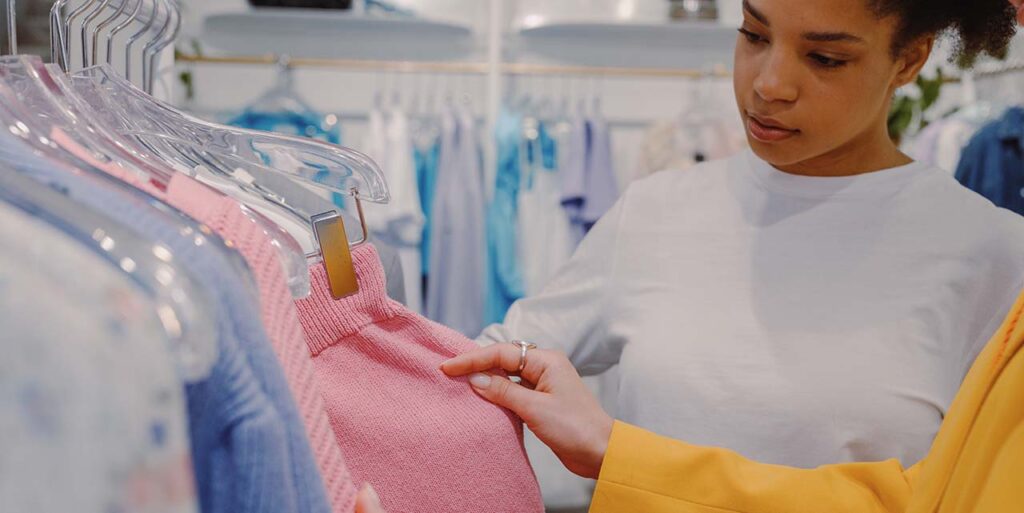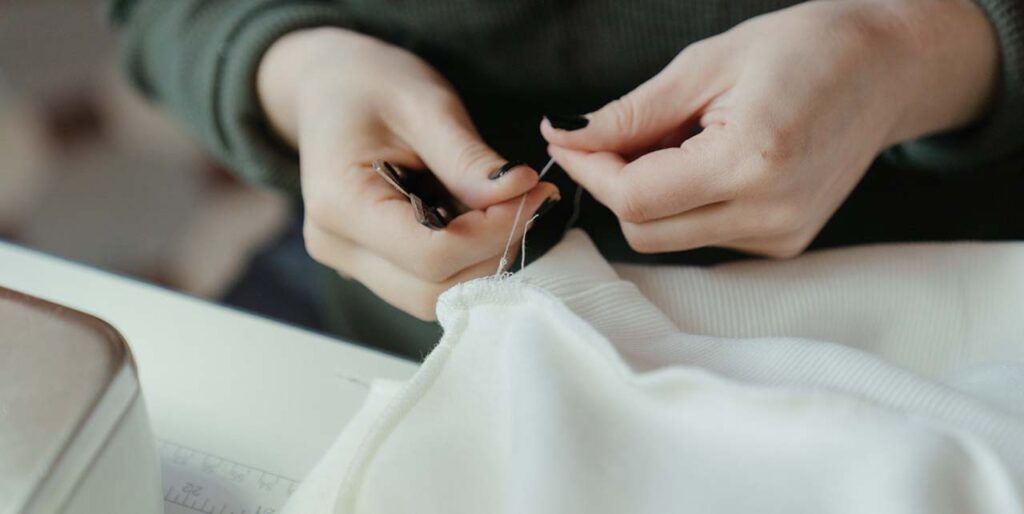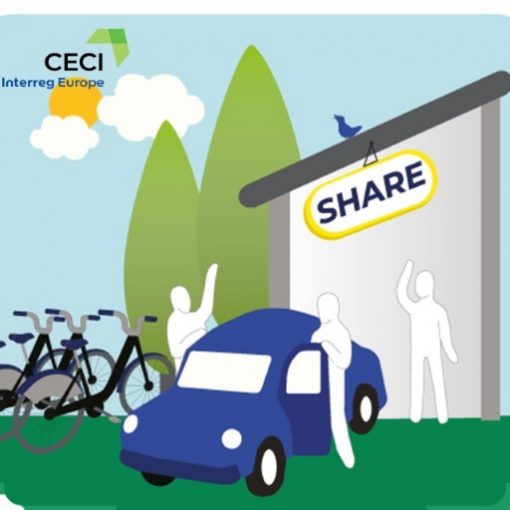Current mass-manufacturing systems are contributing to the general modern ideology that textiles and fashion are disposable. By manufacturing low quality and ill-fitting garments, it intensifies disposable thinking and unconscionably justifies overproduction.
Niinimäki (2011, 46-57) emphasizes the importance to produce more knowledge about consumers relationship with products. Supporting the person-product relationship and how sustainable development is at the core connecting values with consumption. There is a choice behind every act of consumption, directly reflecting the values of the individual. However, Shove (2007, 126) argues that value is unpredictable and based on personal emotions. Therefore, creating a product with value can be challenging. Due to the changing needs of the consumer, it’s difficult to create a relationship with a product and even more difficult to sustain the relationship if it’s ever created (Niinimäki 2011, 46-57).

Value creation
Niinimäki (2011, 46-57) emphasizes the importance to produce more knowledge about consumers relationship with products. Supporting the person-product relationship and how sustainable development is at the core connecting values with consumption. DIY (do it yourself) can create value and attachment towards the product more similar actions should be made to encourage the user towards sustainable behaviour and to involve citizens in a circular economy. However, DIY clothes create value, not as clothes, but as memorabilia as they are self-made. They become like your kids’ drawings you don’t use them for anything, but you still hold on to them. As we humans treasure these kinds of memories, but from an angle of sustainable design, it does not make sense to create more physical products into people’s homes that they don’t need and that won’t replace the need to buy new products.
Annually Finns buy around 13 kg of new clothes and home textiles per person. Globally, clothing is produced nine times more than it is consumed. The production of textiles requires a lot of water and produces carbon dioxide emissions. The greatest environmental impact comes from laundry and maintenance (Martat 2021a.) The Martha Organization, a Finnish home economics organization, founded in 1899 to promote well-being and quality of life in the home, is promoting a sustainable lifestyle with their current campaign ”Closet: Consider, Repair, Recycle” (In Finnish). informing how to implement sustainable consumption choices, as well as promoting social inclusion and teaching at webinars and events how to repair and mend clothes together. With the main goal is to avoid unnecessary consumption.

Promoting reuse together with businesses
LAB recorded in Finnish, in September 2020 a podcast (in Finnish), that shares information, experiences and good practices, with a particular focus on sharing economy solutions. In the podcast the CECI project discusses with Vaatepuu business, about the clothing industry as a concept in the sharing economy. Vaatepuu (in Finnish) lends garments like a library. The practice encourages Finns to participate in the circular economy by adopting sustainable consumption habits and maximizing clothing use. While adopting new consumption habits and extending the lifecycle of products. Furthermore, the practice ensures that the citizens can rent first the garments and later buy items that fit and suits them and thus ensuring longevity and continued use.
Author
Anna Svartström works as an RDI Specialist in LAB University of Applied Sciences and is a project developer at the CECI project. The Interreg Europe funded project CECI, (Citizen Involvement in Circular Economy Implementation), shares information, experiences, and good practices of citizen participation in a circular economy. The project is led by LAB University of Applied Sciences.
References
Shove, E., Watson, M., Hand, M & Ingram, J. 2007. Consumption and competence: The Design of Everyday Life. Oxford: Berg. 126. [Cited 15 Nov 2021]. Available at: http://dx.doi.org/10.5040/9781474293679
Niinimäki, K. 2011. From disposable to sustainable: the complex interplay between design and consumption of textiles and clothing, PhD thesis, Aalto University, Helsinki. 46-57 [Cited 15 Nov 2021]. Available at: http://urn.fi/URN:ISBN:978-952-60-4284-8
Links
Link 1. Interreg Europe. 2020. Project Summary. CECI. [Cited 15 Nov 2021]. Available at: https://www.interregeurope.eu/ceci/
Link 2. Svartström, A. & Medkova, K. 2020. Podcast – Kestävä pukeutuminen ja jakamistalous. LAB Focus. [Cited 15 Nov 2021]. Available at: https://youtu.be/I4VN9AMQQdo.
Link 4. Martat, 2021a. Harkitse, korjaa ja kierrätä. [Cited 15 Nov 2021] Available at: https://www.martat.fi/martat/yhdistyskanava/toiminta/harkitse-korjaa-ja-kierrata/
Link 4. Martat, 2021b. Harkitse, korjaa ja kierrätä. [Cited 15 Nov 2021] Available at: https://www.martat.fi/martat/yhdistyskanava/toiminta/harkitse-korjaa-ja-kierrata/
Link 3. Vaatepuu. 2021. Company [Cited 15 Nov 2021] Available at: https://vaatepuu.fi/
Link 5. Martat. 2021. In English. [Cited 16 Nov 2021] Available at: https://www.martat.fi/in-english/
Pictures
Picture 1. Ron Lach. 2021. [Cited 17 Nov 2021] Available at: https://www.pexels.com/photo/young-african-american-woman-choosing-clothes-in-shop-8386665/
Picture 2. Cottonbro. 2020. [Cited 17 Nov 2021] Available at: https://www.pexels.com/photo/person-in-gray-long-sleeve-shirt-holding-black-pen-4621921/




